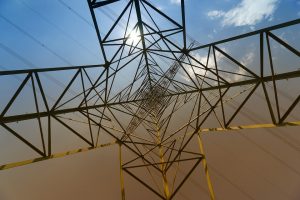
Steel is often categorized according to its carbon content. All steel contains at least some amount of carbon. After all, steel is defined as an alloy of iron and carbon. Without the presence of carbon, it would simply be iron. By adding carbon to it, the metal becomes stronger and harder. This is why many manufacturing and construction companies prefer steel over conventional iron.
Not all steel has the same ratio of carbon to iron, however. Some steel has a higher ratio of carbon to iron than others. Specifically, there are three types of steel, including low-carbon, medium-carbon and high-carbon steel. So, what’s the difference between these types of steel exactly?
What Is Low-Carbon Steel?
Low-carbon steel is characterized by a low ratio of carbon to iron. By definition, low-carbon consists of less than 0.30% of carbon. Also known as mild steel, it costs less to produce than both medium-carbon and high-carbon steel. In addition to its low cost, low-carbon steel is more pliable, which may improve its effectiveness for certain applications while lowering its effectiveness for other applications.
What Is Medium-Carbon Steel?
Medium-carbon steel has a higher ratio of carbon to iron than low-carbon steel but still less than that of high-carbon steel. While low-carbon steel consists of less than 0.30% carbon, medium-carbon steel contains anywhere from 0.30% to 0.60% carbon. Many automotive parts are made of medium-carbon steel. It’s stronger and more durable than low-carbon steel but still offers at least some ductility.
What Is High-Carbon Steel?
High-carbon steel, of course, has the highest ratio of carbon to iron. It consists of more than 0.60% carbon, thereby changing its physical properties. Also known as carbon tool steel, it has around 0.61% to 1.5% carbon. With such a high carbon content, high-carbon steel is stronger and harder but less ductile than low-carbon and medium-carbon steel.
It’s important to note that all types of steel, including low-carbon, medium carbon and high-carbon, contain more than just iron and carbon. While steel is characterized by these two main elements. it typically contains trace amounts of other elements. For example, it’s not uncommon for steel to contain trace amounts of chromium or nickel.
To recap, steel is often categorized according to its carbon content. Low-carbon steel consists of less than 0.30% carbon. Medium-carbon steel consists of 0.30% to 0.60% carbon. And high-carbon steel contains more than 0.60% carbon. As the carbon content of steel increases, it becomes stronger and harder. At the same time, it also becomes less ductile.
